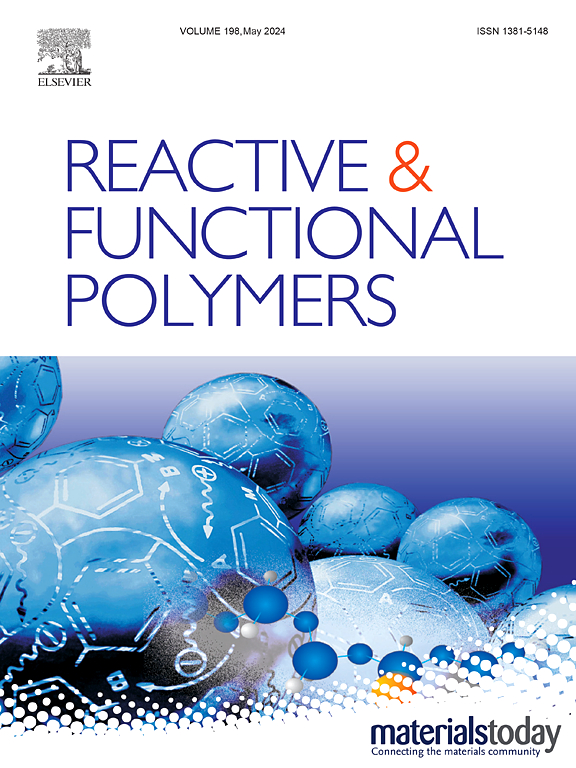Reactive polythiosemicarbazide membranes featuring thiosemicarbazide ligands for selective chelation and dynamic mercury adsorption
IF 5.1
3区 工程技术
Q1 CHEMISTRY, APPLIED
引用次数: 0
Abstract
We report the development of a novel polymeric membrane based on polythiosemicarbazide (PTSC), engineered for highly selective and efficient mercury ion removal from contaminated water. Unlike conventional sorbents that require post-functionalization, PTSC incorporates a chelating thiosemicarbazide group in every repeating unit, offering a dense array of active sites for direct metal coordination. This intrinsic functionality eliminates the need for external modification and significantly enhances both adsorption capacity and operational simplicity. The membranes were fabricated via the phase inversion method, yielding an asymmetric porous structure with interconnected pathways that support high flow rates and pressure-driven filtration. This architecture overcomes the diffusional limitations typical of packed-bed adsorbents. Batch adsorption studies conducted under acidic conditions revealed an exceptionally high mercury uptake capacity of 1418 mg/g from 1000 ppm solutions. Dynamic filtration experiments further confirmed rapid and selective mercury removal (93–99 %) from low-concentration (10 ppm) samples. The membranes also demonstrate excellent reusability, with over 99 % regeneration efficiency using 0.1 M thiourea, retaining performance across multiple cycles. Selectivity tests confirmed strong selectivity for Hg2+ over competing heavy metals (Cu2+, Cr3+, Co2+, Pb2+, Cd2+), guided by hard-soft acid-base (HSAB) coordination principles. This work introduces a scalable, functional polymer platform with built-in chelation capability, offering a powerful alternative to conventional mercury adsorbents in water purification applications.

具有硫脲配体选择性螯合和动态汞吸附的反应性聚硫脲膜
我们报道了一种基于聚硫脲(PTSC)的新型聚合物膜的开发,该膜用于高选择性和高效地去除污染水中的汞离子。与需要后功能化的传统吸附剂不同,PTSC在每个重复单元中包含一个螯合氨基硫脲基团,为直接金属配位提供密集的活性位点。这种固有的功能消除了外部修改的需要,并显着提高了吸附能力和操作简单性。膜是通过相反转法制备的,产生了具有相互连接通道的不对称多孔结构,支持高流速和压力驱动过滤。这种结构克服了填料床吸附剂典型的扩散限制。在酸性条件下进行的批量吸附研究表明,从1000 ppm溶液中摄取汞的能力异常高,为1418 mg/g。动态过滤实验进一步证实了从低浓度(10 ppm)样品中快速和选择性地去除汞(93 - 99%)。该膜还具有出色的可重复使用性,使用0.1 M硫脲的再生效率超过99%,在多个循环中保持性能。在硬-软酸碱(HSAB)配位原理的指导下,Hg2+对竞争性重金属(Cu2+、Cr3+、Co2+、Pb2+、Cd2+)具有较强的选择性。这项工作介绍了一种可扩展的、功能性的聚合物平台,具有内置的螯合能力,在水净化应用中提供了传统汞吸附剂的强大替代品。
本文章由计算机程序翻译,如有差异,请以英文原文为准。
求助全文
约1分钟内获得全文
求助全文
来源期刊

Reactive & Functional Polymers
工程技术-高分子科学
CiteScore
8.90
自引率
5.90%
发文量
259
审稿时长
27 days
期刊介绍:
Reactive & Functional Polymers provides a forum to disseminate original ideas, concepts and developments in the science and technology of polymers with functional groups, which impart specific chemical reactivity or physical, chemical, structural, biological, and pharmacological functionality. The scope covers organic polymers, acting for instance as reagents, catalysts, templates, ion-exchangers, selective sorbents, chelating or antimicrobial agents, drug carriers, sensors, membranes, and hydrogels. This also includes reactive cross-linkable prepolymers and high-performance thermosetting polymers, natural or degradable polymers, conducting polymers, and porous polymers.
Original research articles must contain thorough molecular and material characterization data on synthesis of the above polymers in combination with their applications. Applications include but are not limited to catalysis, water or effluent treatment, separations and recovery, electronics and information storage, energy conversion, encapsulation, or adhesion.
 求助内容:
求助内容: 应助结果提醒方式:
应助结果提醒方式:


